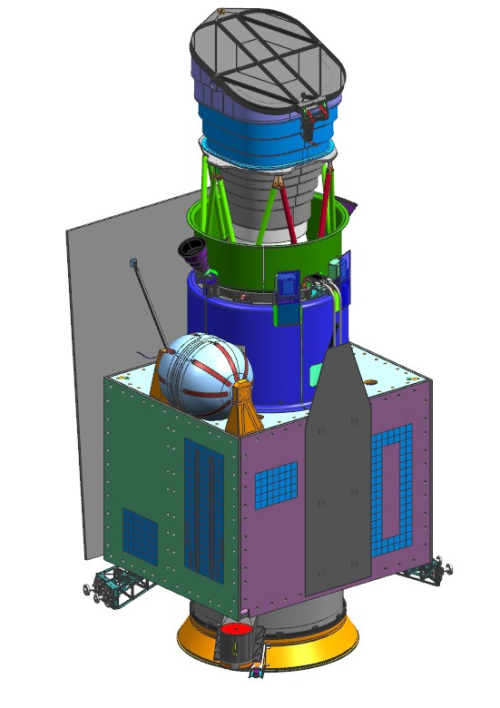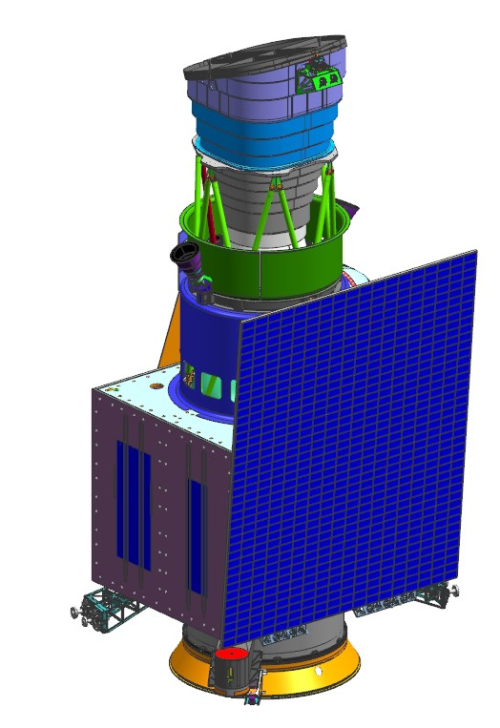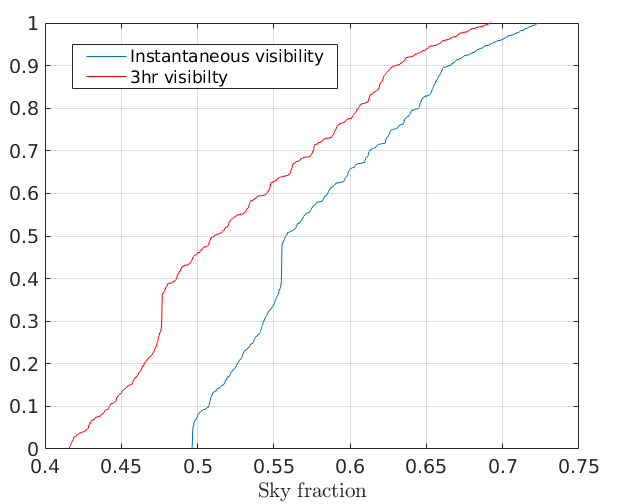The ULTRASAT spacecraft bus is constructed around two main components: the ULTRASAT wide-field telescope, and the bi-propellant propulsion system. The propellant mass contributes about half of ULTRASAT total launch mass, and is required to enable ULTRASAT perform the GTO-GEO maneuvers. The bus uses high TRL components and is based on the successful IAI heritage series of small satellites, benefiting from that company’s long-term experience in fabricating and operating missions in both LEO and GEO orbits. The spacecraft is designed so that it can be attached as a secondary payload inside the launcher.
The spacecraft gimbaled high-gain antennas are designed to support ULTRASAT data rate (~5Mbps), and together with the GEO orbit allow for continuous real-time data download for all allowed pointings (see pointing restrictions below). In case of a communication failure, observations will be stored on ULTRASAT On-Board Recorder (OBR) and be downloaded once the communication is restored. The OBR can store nearly 8 days of continuous observations with nominal exposure time (300 sec).
In order to enable quick response to ToOs, ULTRASAT is designed with full-hemispheric telecommand antennas and high pointing slew agility, which enable it to start observations at any visible position in less than 15 min from an incoming alert trigger (e.g., of GW event). ULTRASAT’s power system (solar panels, battery) supports at least 3 hours of ToO observation with negative power balance (ULTRASAT survey mode is always with positive power balance). Assuming randomly distributed ToO targets, <25% of ToOs will be with negative power balance.
Scattered light in the optical system from the Sun will saturate ULTRASAT images, while scattered light from the Earth or Moon can significantly contribute to the background noise. The payload is designed to suppress the scattered light for a range of angles between ULTRASAT’s line-of-sight and the Sun/Earth/Moon. Thus, ULTRASAT is restricted to observe fields that are >70o from the Sun (this restriction also applies during slewing), >48o from the Earth limb and >35o from the moon. Under these restrictions, ULTRASAT can instantaneously observe >50% of the sky at any given moment, and observe continuously for at least 3 hours >42% of the sky (see Figure 2.2).
ULTRASAT pointing stability (i.e., jitter) during 300 sec (the nominal exposure time) is <3 arcseconds (3σ). For hot sources imaged at radial distance of ~5o off the FOV center, the jitter contributes significantly to the image PSF, while for hot sources at other locations in the FoV and for cooler sources at any location within the FoV the jitter contribution is negligible.
Figure 2.1 shows the satellite bus while Table 2 lists its main characteristics.


Figure 2.1: The ULTRASAT Spacecraft

Figure 2.2: ULTRASAT sky accessibility, under pointing restisons with respect to the Sun, Earth and Moon.
| Property | Value | Comments |
|---|---|---|
| Self-transfer | GTO-to-GEO | |
| Station keeping | Full (NS+EW) | |
| Real-time download of data | Continuous | |
| Volume | 3.6x1.9x1.5 | |
| Launch Mass | 1100 kg | |
| Power | 540W | |
| Pointing accuracy | <0.5 deg | @ 3 sigma |
| Pointing jitter | <3’’ | in 300 sec @ 3 sigma |
| Downlink rate | 5 Mbps | |
| Slew rate | > 0.5 deg/sec |
Table 2
